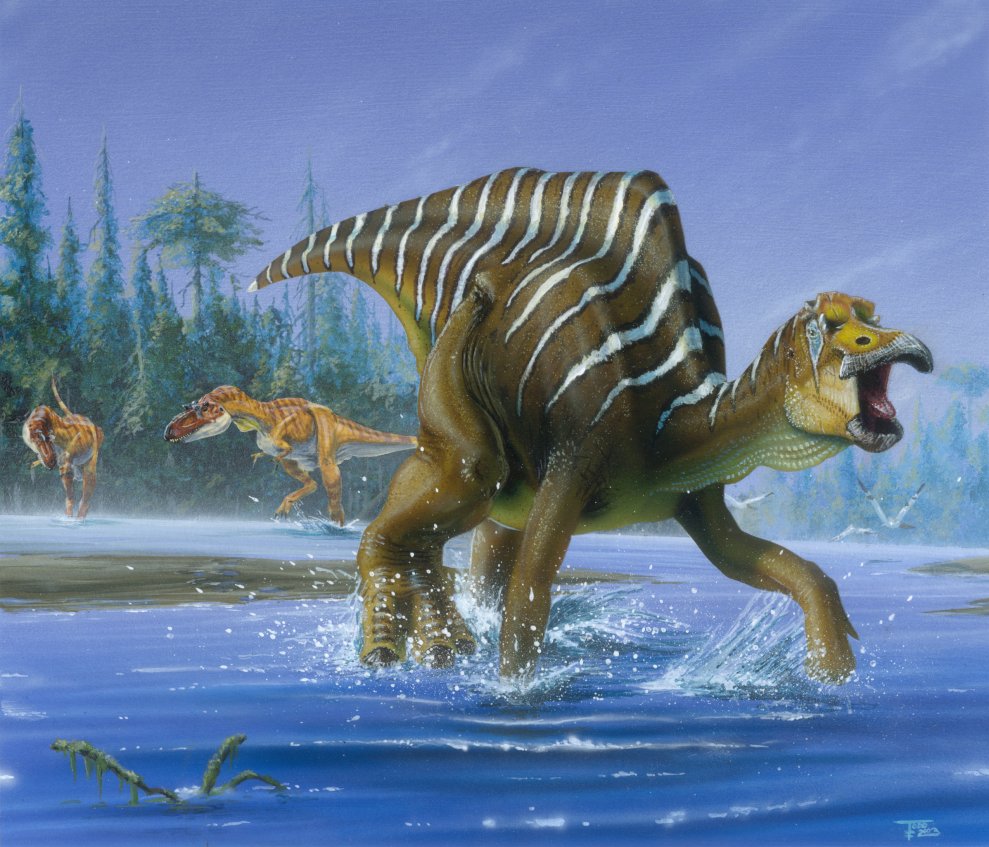Top 10 nature's greatest creations
Hadrosaurs
 |
The incredible success of the Hadrosaur comes from the unique jaw structure by which they can be identified. Hadrosaur jaws were elongated and flat, leading to the nickname 'duck billed dinosaurs'. These contained literally thousands of teeth and were perfect for chewing plants. Combined with a long digestive tract, stored between the hallmark wide hips, this made hadrosaurs capable of eating plants that other dinosaurs could not, particularly waxy needles. Hadrosaurs are also thought to have eaten rotten wood to extract the nutrients of the fungus living inside. Other dinosaurs relied largely on stomach stones to digest their food but with chewing down to an art, Hadrosaurs had the energy needed to outrun its predators. They also sought safety in numbers, living in large herds. Some scientists speculate that these would have stripped an area clean of plant life before moving off.
Hadrosaurs varied greatly in size. Most were capable of walking on either two or four legs and could lift themselves on their larger back legs to reach higher food sources. The major difference between Hadrosaur species is the presence (or lack of) a cranial crests, protruding from the backs of their skulls. These were thought to be decorative and sexual in function, hence their variation between species of Hadrosaur.
Hadrosaurs have also been called 'bird hipped' dinosaurs as they share a common hip configuration with birds. The Hadrosaur family was not one of the species that evolved into modern birds but this was crucial in proving the common ancestry between dinosaurs and modern birds.
Hadrosaurs were most common during the Cretaceous era (which is when their evolved eating habits and digestive capabilities would have been most useful) when their numbers would have been in the billions.
 0
0 







